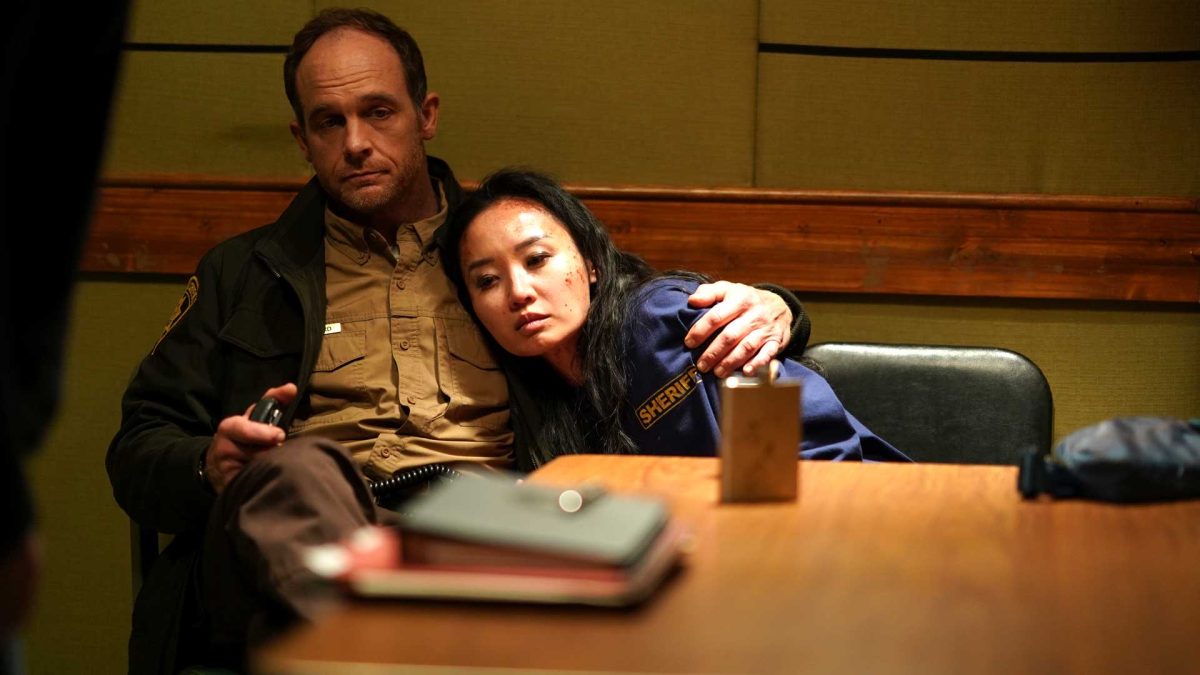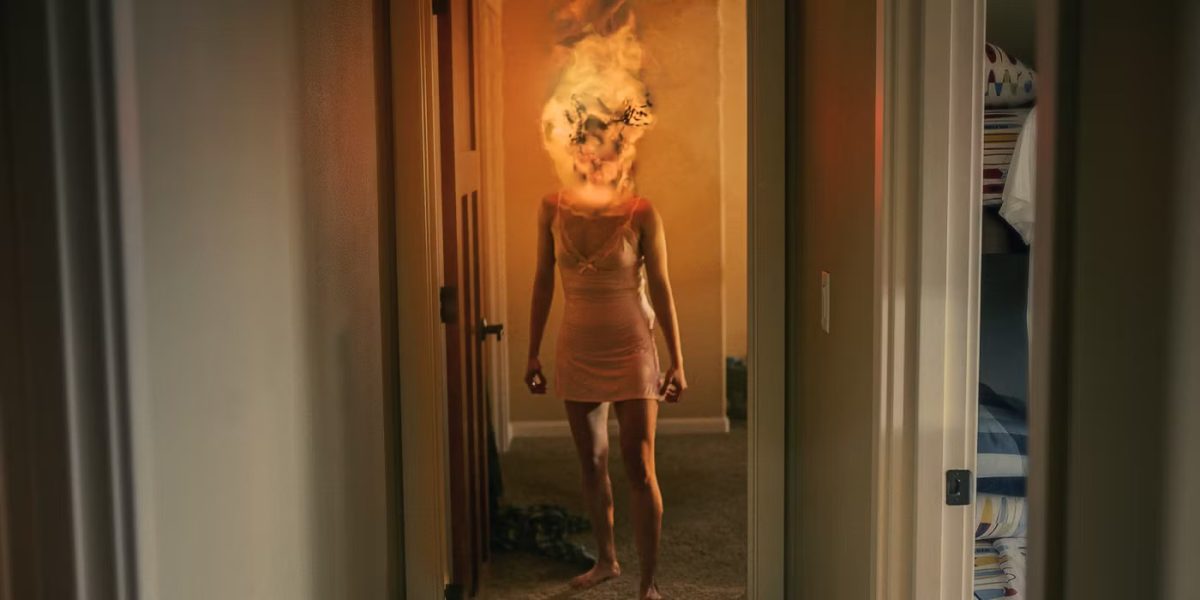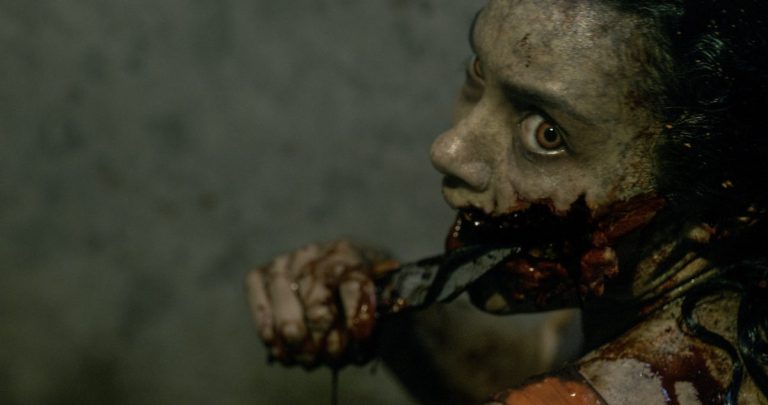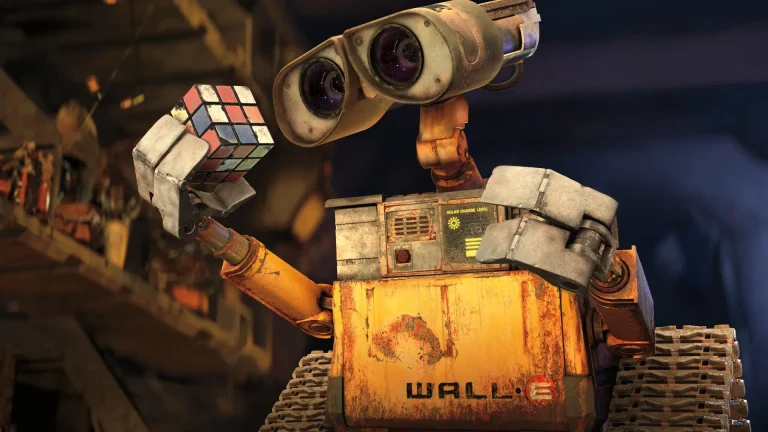In Alma and the Wolf (2025), Ren’s descent into madness is as chilling as it is tragic. What starts as a desperate search for his missing son slowly unravels into a harrowing odyssey through grief, guilt, and the fragile limits of the mind. As reality fractures, Ren retreats into a world of comforting delusions—casting himself as the hero, turning a fleeting infatuation into a full-blown romance, and blaming a mythical werewolf for his pain. But as buried memories resurface and the façade begins to crumble, Ren is forced to face a terrifying truth: he is not just the victim of this nightmare—he is its creator and its monster. How did it all come undone? Let’s take a closer look.
Spoilers Ahead
Alma and the Wolf (2025) Plot Summary and Movie Synopsis:
What Does Alma Want from Ren?
Alma’s actions are driven by desperation, pain, and the lingering emotional bond she shares with Ren. At the core, Alma wants validation, protection, and redemption, not just for herself, but also for the memory of her dog, Tigger. When Ren finds Alma bloodied and barefoot, cradling her dead dog, she tells him an unbelievable story about a wolf. The local authorities immediately dismiss her account because of her history with drugs. Yet, Alma insists. She doesn’t just want someone to listen, she wants someone to believe her. Ren becomes that person, not just because of their shared past, but because Alma’s pain is too real to ignore. By telling Ren her story, she’s asking him to see past the addict label and recognize her suffering as real.
Alma makes Ren promise to kill the wolf that killed her dog. Alma, clearly vulnerable and isolated, turns to Ren as the only one willing to fight for her. In asking him to hunt the wolf, she is seeking not just vengeance but someone strong enough to confront the danger she cannot face alone. Their shared high school history adds another layer. Alma is reaching out to someone who knew her before the addiction, before the trauma. She wants Ren to remember that version of her and perhaps help her return to it. Through Ren, she seeks a path back to her former self.
What Happens to Jack?
Jack’s fate marks the turning point in Ren’s life and the story’s central mystery. His disappearance is not random; it is a consequence of deeper, unfolding horrors tied to the town’s wildlife intrusion and an eerie illness spreading through the community. Jack represents the only real connection Ren still has to a sense of purpose. Despite his estranged relationship with Connie and struggles with alcohol, Ren tries to stay involved in Jack’s life, driving him to games, asking about college scouts. However, Jack avoids answering, instead using Ren’s newfound interest in Alma to dodge serious conversations. Jack behaves maturely, even encouraging Ren to go on a date. But beneath that maturity lies a teenager dealing with absent parenting, emotional distance, and a sense of being second to his father’s chaotic pursuits.

After Ren and Alma sleep together, Jack goes for a walk with his dog. This moment, seemingly normal, turns into horror when the werewolf, creature, or curse, still unclear, attacks. Jack’s dog doesn’t return, and Jack vanishes without a trace. The wolfman’s presence here is no coincidence. The attack mirrors what happened to Alma’s dog and the town’s sick residents. Jack becomes the next victim in a pattern Ren had previously dismissed as hallucination or small-town superstition. Jack’s disappearance jolts Ren into action. He no longer treats Alma’s story as fantasy. The same beast Alma begged him to confront has now taken his son. Emotionally, this shifts Ren from passive failure to an active seeker. Jack’s fate forces Ren to face the threat he ignored, and perhaps, finally, be the father he’s failed to be.
What Nightmares Does Ren See?
Ren’s nightmares reflect his escalating fear, guilt, and helplessness. Each dream builds on the trauma of Jack’s disappearance and the mysterious violence plaguing the town. These visions are not random; they are psychological echoes of Ren’s fractured mind, filled with warning signs and unresolved emotional conflicts. While resting in the woods, Ren dreams of Ashley stumbling out of the bushes. Ashley, once a harmless drunk, is now part of the nightmare. Ren is desperate for answers and asks Ashley about Jack. This reflects Ren’s real-world desperation to find meaning or connection in chaos. In the dream, Ren runs to a lake and sees the werewolf setting Alma on fire.
This violent image of Alma burning is symbolic of Ren’s fear of failing everyone who trusts him. Alma’s plea to find Jack before the wolfman does adds urgency, suggesting Ren’s subconscious believes Jack’s time is running out. When Ren wakes up, he immediately takes his team to the lake, proving the nightmare influences his real-world decisions. Later, Ren dreams again, this time of visiting Alma, only to realize she is not human. Her face is burnt, distorted. This terrifying vision deepens his paranoia. The creature’s voice tells him the truth he dreads: that Jack will die no matter what. This is Ren’s deepest fear – powerlessness. He can fight, search, and hope, but still lose his son. It confirms his guilt and fear of being too late.
Shaken, Ren searches for Alma, only to find Betty behaving erratically. She vomits and rushes toward him, echoing infected behavior. Ren reacts instinctively, shooting her. At this moment, it’s no longer clear where the nightmare ends and reality begins. His fear has warped into lethal action. Ren’s nightmares are warnings, fears, and reflections, signs that the line between what’s real and what’s imagined is fading fast.
Alma and the Wolf (2025) Movie Ending Explained:
What Happened to Jack and Ashley?
Ren’s actions stem from a toxic mix of crushed dreams, masculine entitlement, and emotional delusion. His need to control, to be seen as important, and to mold others into extensions of his broken identity drives him to a tragic breaking point. Ren once had it all, or so he believed. A promising baseball career, a family, a future. But an injury ended his sports dream, and his life spiraled into bitterness and addiction. He pins all his hopes on Jack, believing that if Jack succeeds in baseball, he succeeds by proxy. Jack becomes a second chance Ren never had.
But when Jack confesses he loves music, not baseball, it shatters the illusion. Ren doesn’t see this as a personal choice; he sees it as rejection. In a moment of spiraling emotion, he convinces himself that Jack’s deviation from the plan means doom. Ren drowns Jack in the lake, not just out of anger, but because Jack’s autonomy breaks Ren’s fragile belief that he can still reclaim some part of his former glory. Ashley becomes collateral damage. He sees what Ren does and runs. In Ren’s fractured mind, Ashley represents exposure and judgment. To maintain control over the narrative, over his image, Ren kills him with a stone. It’s a desperate move, not just to cover up a crime, but to silence the reality Ren refuses to face: that he’s no longer the good guy, the father, or the hero.

Ren’s belief in his own inherent worth, despite repeated failures, mirrors a broader cultural delusion. He feels he deserves admiration, loyalty, and success simply for having potential. That entitlement, unchecked, unexamined, manifests as violence when reality fails to conform. His crumbling masculinity, masked by charm and ‘good looks,’ hides a deep rot. The town of Spiral Creek becomes the stage for his final unraveling. In the end, Ren kills Jack and Ashley not purely out of rage, but because he cannot handle a world where he is no longer central, special, or obeyed. His love turns possessive, and his legacy becomes a curse.
What Does Ren Learn About Reality?
Ren’s journey is a descent into illusion and a painful awakening from it. In the end, he learns that the world he believed in, filled with monsters, romance, and redemption, was a delusion built to shield himself from regret and failure. Ren’s version of reality starts falling apart when he finds Jack’s body in the very cottage where he believed he had romantic moments with Alma. This discovery is the first clear crack. He realizes Alma was never a lover but a detective investigating Jack and Ashley’s disappearance. His mind, unable to cope with the truth, had transformed her into a savior figure, someone who loved him, believed in him, and gave him meaning.
Confronted by Alma, Ren confesses to his crimes. It’s in this moment of honesty that he sees the full scope of his illusion. Everything after the baseball game, his investigation, his nightmares, his ‘hero’s journey’ has been a manufactured reality. The red balloon, a token from Jack’s childhood, becomes the anchor point. It marks the moment Ren slipped from a painful truth into comforting fantasy. He tried to rewrite reality to escape guilt, but the illusion only deepens his loneliness.
The wolfman, once seen as an external threat, now speaks to Ren as part of his inner self. It tells him the truth: he is the danger. He has hurt everyone: Jack, Ashley, and even Alma in his twisted dreams. Ren understands he can no longer be trusted with reality. Ren takes Murphy’s gun and ends his life, not out of fear, but as an act of redemption. He finally accepts who he is and what he has done. The last image of him holding the red balloon is haunting. It symbolizes the innocence he once had, the life he lost, and the peace he never found. Ren learns that reality cannot be bent by desire, and that running from truth only deepens the tragedy.






![Take Back the Night [2022] Review: An effective #Metoo thriller with an infuriating monster](https://79468c92.delivery.rocketcdn.me/wp-content/uploads/2022/03/Take-Back-the-Night-1-768x405.jpg)